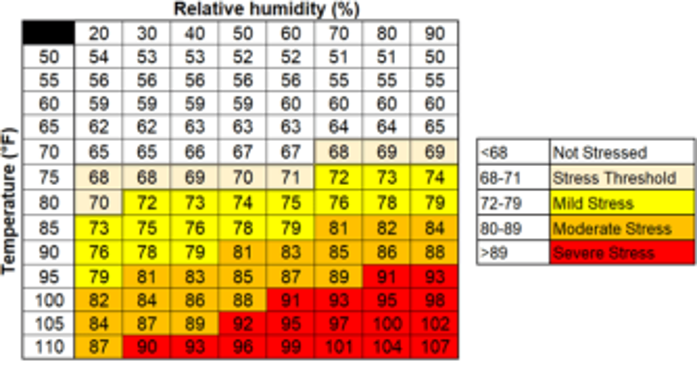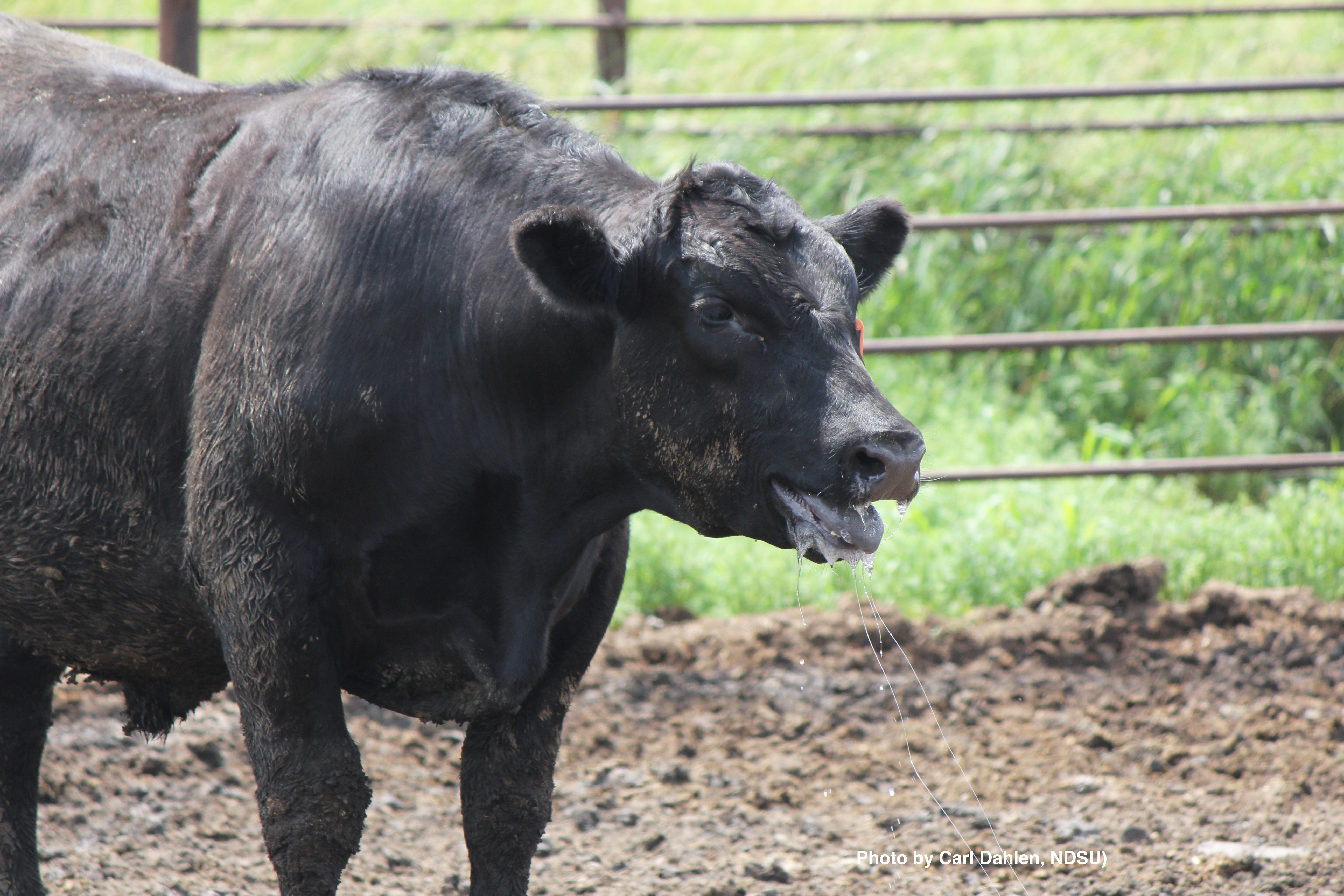Heat Stress in Beef Cattle
go.ncsu.edu/readext?944458
en Español / em Português
El inglés es el idioma de control de esta página. En la medida en que haya algún conflicto entre la traducción al inglés y la traducción, el inglés prevalece.
Al hacer clic en el enlace de traducción se activa un servicio de traducción gratuito para convertir la página al español. Al igual que con cualquier traducción por Internet, la conversión no es sensible al contexto y puede que no traduzca el texto en su significado original. NC State Extension no garantiza la exactitud del texto traducido. Por favor, tenga en cuenta que algunas aplicaciones y/o servicios pueden no funcionar como se espera cuando se traducen.
Português
Inglês é o idioma de controle desta página. Na medida que haja algum conflito entre o texto original em Inglês e a tradução, o Inglês prevalece.
Ao clicar no link de tradução, um serviço gratuito de tradução será ativado para converter a página para o Português. Como em qualquer tradução pela internet, a conversão não é sensivel ao contexto e pode não ocorrer a tradução para o significado orginal. O serviço de Extensão da Carolina do Norte (NC State Extension) não garante a exatidão do texto traduzido. Por favor, observe que algumas funções ou serviços podem não funcionar como esperado após a tradução.
English
English is the controlling language of this page. To the extent there is any conflict between the English text and the translation, English controls.
Clicking on the translation link activates a free translation service to convert the page to Spanish. As with any Internet translation, the conversion is not context-sensitive and may not translate the text to its original meaning. NC State Extension does not guarantee the accuracy of the translated text. Please note that some applications and/or services may not function as expected when translated.
Collapse ▲As I write this article, the temperature according to my phone is 85 degrees F with a “feels like” of 99! We, or at least most of us, have the luxury of going into an air-conditioned building, vehicle, or cab of a tractor to deal with the heat. Unfortunately, our cattle do not. Therefore, we as livestock producers need to do all we can to alleviate heat stress in our herds. I can hear you now, “I can’t control the weather!” or maybe, “You expect me to air condition the whole world?”. I know we can only do so much but here are some things to consider.
The comfort zone of mature beef cattle ranges from below zero in winter to 75 degrees F in the summer. However, cattle can begin to show signs of heat stress at a temperature of 72 degrees F and 50% relative humidity. Humidity should always be taken into account when figuring heat values (see chart). Signs of heat stress include labored open mouth breathing, head hanging low, and drooling or foaming at the mouth. Cattle cool themselves by panting. Furthermore, cattle do sweat but not effectively enough to dissipate much heat by evaporative cooling. On top of that, cattle stack heat. What this means is cattle that become heat-stressed need to lose the heat built up during the day in the cooling of the night. If night time temperatures do not get low enough to drop core body temperature, the cattle start at that temperature the next day and heat up again. If this continues for several days, the outcome could be fatal.
With all that said, what are some steps we can take to mitigate heat stress? First and foremost – water. Make sure cattle have access to plenty of clean, cool water. Be sure you have adequate space for the size of your herd. The general recommendation is 2 inches of linear space per head. Also be sure you have adequate volume and refill capacity to meet needs. During the hot summer months, a cow’s water consumption can double due to high temperatures.
If you are feeding your herd, feed in late afternoon or evening. Digestion produces heat which will exacerbate the problem. By feeding later in the day, the digestion occurs at night and it will increase lung capacity during the day. Allow for air movement around the cattle. Air movement will promote evaporative cooling. As stated above, cattle do not sweat much so this will be minimal but every little bit helps. You know how much you appreciate a breeze when you are out in the heat. If you have cattle in lots or pens, sprinklers can be used to cool the ground where cattle lounge. Have them in place early and use them on some of the hotter days to allow cattle to adjust to them. You want to be sure the sprinklers produce large drops of water. A fine mist will probably just make the pens more humid.
Provide shade. This is a touchy subject with some people. Research is contradictory but for the most part indicates a positive effect on production when cattle have shade. It can be natural or manmade. If you are putting up a shelter, tarp, or shade cloth just be sure it is at least seven feet high to promote air circulation underneath the cover. Whether using natural shade or manmade, make sure there is enough shaded space for the cattle to spread out some. This will allow for air circulation around each animal to aid in cooling. A group of cattle crowded close together under a small spot of shade are nullifying the shade effectiveness by sharing body heat. To the same point, control flies as much as possible. For one, flies just add another stressor to the cattle. More importantly, cattle that have heavy fly populations tend to bunch together in an effort to get relief from the flies by more swishing tails and heads. This again causes a situation where the cattle are sharing body heat, thus increasing the potential for heat stress.
Finally, don’t work cattle during the heat of the day. If you must work cattle, do it in the morning when temperatures are lower. If night time temperatures do not go below 85 degrees F, try to avoid working cattle. And even if it is cooler in the evening, don’t work your cattle then. Cattle reach peak body temperature about 2 hours after daytime peak so they will still be very hot even if the ambient temperature feels comfortable.





